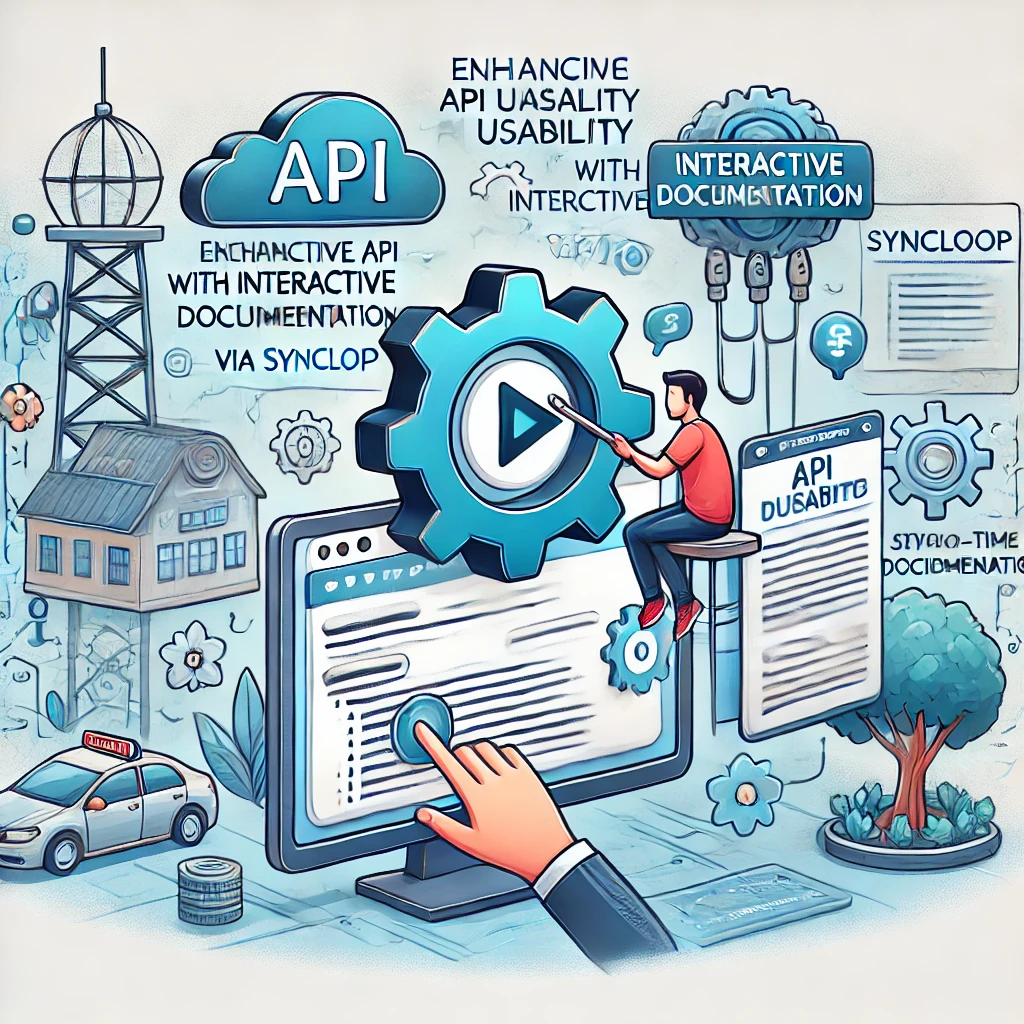Enhancing API Usability with Interactive Documentation via Syncloop

Syncloop offers powerful tools to create interactive API documentation, enhancing usability and promoting adoption. With features like live testing, parameter exploration, and detailed responses, Syncloop transforms how APIs are documented and consumed. This blog explores how Syncloop facilitates interactive documentation and offers best practices for improving API usability.
The Role of Interactive Documentation in API Usability
Interactive API documentation enhances usability by:
- Simplifying Learning: Provides developers with real-time examples and feedback.
- Improving Integration: Enables quick testing of endpoints and workflows.
- Reducing Support Requests: Clarifies usage and troubleshooting steps, minimizing developer confusion.
- Encouraging Adoption: Makes APIs more approachable and easier to integrate.
- Promoting Consistency: Ensures accurate and up-to-date documentation in dynamic environments.
Challenges in Traditional API Documentation
- Lack of Interactivity Static documentation lacks live testing or examples, making it harder for developers to learn.
- Outdated Information Inconsistent updates lead to discrepancies between documentation and API functionality.
- Complex Onboarding New developers struggle to understand workflows without hands-on examples.
- High Support Overhead Ambiguities in documentation result in frequent support requests.
- Time-Consuming Updates Maintaining traditional documentation can be labor-intensive and error-prone.
How Syncloop Enhances API Documentation
Syncloop provides tools and features for creating interactive API documentation:
- Live Testing Allow developers to test API endpoints directly from the documentation interface.
- Dynamic Parameter Exploration Provide interactive fields for developers to input and test different parameter combinations.
- Automated Documentation Generation Generate documentation automatically from API definitions and workflows.
- Real-Time Feedback Display live responses and error messages for tested API calls.
- Integrated Code Samples Offer code snippets in multiple programming languages for easier integration.
- Version Management Maintain documentation for different API versions, ensuring consistency across releases.
Steps to Create Interactive Documentation with Syncloop
Step 1: Define API Endpoints and Workflows
Use Syncloop to:
- Document all available endpoints with descriptions, required parameters, and expected responses.
- Highlight critical workflows and their dependencies for clarity.
Step 2: Enable Live Testing
Configure Syncloop’s live testing feature to:
- Allow developers to test endpoints with real or sandbox environments.
- Include dynamic input fields for required and optional parameters.
- Display detailed response payloads and HTTP status codes.
Step 3: Generate Code Samples
Leverage Syncloop’s tools to:
- Generate code snippets in languages like Python, Java, and JavaScript.
- Provide examples for authentication, parameter configuration, and response handling.
- Embed code samples within the documentation for easy reference.
Step 4: Automate Updates
Automate documentation updates using Syncloop to:
- Sync changes in API definitions with the documentation.
- Reflect updates in real time for newly added or deprecated endpoints.
- Notify developers of significant changes through versioned release notes.
Step 5: Monitor Usage and Feedback
Enable analytics and feedback tools in Syncloop to:
- Track frequently accessed endpoints and common testing patterns.
- Identify pain points where developers encounter errors or confusion.
- Use insights to refine documentation and improve usability.
Best Practices for Interactive API Documentation
- Focus on Clarity Use simple language, clear examples, and consistent formatting.
- Offer Comprehensive Examples Include real-world scenarios that demonstrate API functionality.
- Ensure Accuracy Regularly review and update documentation to reflect the latest API changes.
- Promote Self-Service Enable developers to explore and test APIs independently with live testing and feedback.
- Leverage Analytics Use usage data to prioritize improvements and address developer pain points.
Example Use Case: SaaS Platform API
A SaaS platform uses Syncloop to enhance its API documentation:
- Live Testing: Developers test endpoints like /user/create and /user/login directly from the documentation.
- Dynamic Fields: Input fields allow testing of parameters like email, password, and user_role.
- Integrated Samples: Code snippets in Python and Node.js demonstrate how to authenticate and call endpoints.
- Version Management: Maintains separate documentation for v1 and v2 of the API.
- Analytics: Tracks the most frequently accessed endpoints to prioritize enhancements.
Benefits of Interactive API Documentation with Syncloop
- Improved Developer Experience: Provide hands-on tools for faster learning and integration.
- Reduced Support Effort: Empower developers to troubleshoot and test independently.
- Increased API Adoption: Make APIs more accessible and attractive to potential users.
- Streamlined Updates: Automate documentation updates to ensure consistency.
- Actionable Insights: Use analytics to refine documentation and prioritize enhancements.
The Future of API Documentation
As APIs grow in complexity and adoption, interactive documentation will become a standard for improving usability and engagement. Syncloop equips developers with tools to create, maintain, and enhance documentation that meets the needs of modern applications and developers.
Image Description
A conceptual illustration showcasing Syncloop’s tools for interactive API documentation, featuring live testing, real-time feedback, and integrated code samples. The image highlights developer-centric features and streamlined API integration workflows.
Back to Blogs